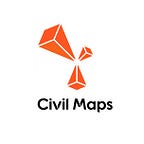Autonomous Driving Regulators At Our Doorstep
By Fabien Chraim, Co-founder and VP of R&D at Civil Maps
Last week, we hosted some distinguished house guests.
By now, our neighborhood is used to a steady stream of automotive execs and R&D types from all over the world, but this particular group was comprised of lawmakers and the mission was purely about learning and discussion. After Federal Secretary for Transport and Digital Infrastructure of Germany Alexander Dobrindt and his entourage landed at SFO, their first stop was our home-office in Albany, CA. Arriving in a Mercedes sprinter van and a large black SUV, the sight of diplomats piling out of vehicles and journalists in our front yard drew a few residents out of their houses to check out what was happening.
Secretary Dobrindt’s representatives reached out a few weeks ago, expressing the desire to learn about Civil Maps in order to better understand the future of autonomous driving. Our company works on technology that is critical to this task; we give cognition to cars, enabling them to gain context about their driving environment and crowdsource dynamic 3D maps. While the group behaved mostly like good students, listening intently and asking many questions, they are actually policy leaders with regards to autonomous vehicle legislation.
On January 25th, Germany became the first country to pass legislation providing initial frameworks for autonomous and semi-autonomous vehicle research and driving. Mr. Dobrindt and his team, who drafted the legislation, wanted to reassure German automakers, who collectively produced 8.6 percent of the world’s automobiles in 2016, that federal policy would be supportive of their research initiatives. In the future, the Secretary says this will likely entail the use of a “black box” to record when driverless systems are active.
“There are certain prerequisites that need to be met,” said Secretary Dobrindt told reporters who gathered at our house/office for the visit. “For example, the vehicle is equipped with a black box which can tell at all times whether the vehicle or the human was in control over the vehicle or if the computer was functioning well at all times.”
After exchanging initial greetings on our driveway, the group piled into the house. Our conference room, formerly the master bedroom for past tenants at 1605 Sonoma Ave, was stuffed with journalists, policy makers, and a few members of our own team. It was my pleasure to lead the discussion covering these topics:
- What is Cognition for Cars — Civil Maps gives cars contextual awareness, enabling autonomous vehicles to make better decisions for safer driving and crowdsourcing of 3D map data.
- Making Sense of Sensor Data — From point cloud to localizing in six dimensions within five cm precision using Civil Maps’ Signature-based Localization
- Augmented Reality Maps — Projecting 3D HD semantic map data (lane markings, signage, and etc.) into the field of view of the car’s sensors in real time. The goal: enabling rider trust, while facilitating the reliable navigation and safety of an autonomous vehicle.
- Crowdsourcing of maps through connected vehicle swarms
- Potential Solutions to the High Cost of Autonomous Vehicle R&D — Low compute and cost-effective sensing equipment, Atlas DevKit (beta)
- How Simulation Engines Accelerate Development
- Working with automotive OEM Partners Globally
After some Q&A, Mr. Dobrindt went outside to get a demo of our Augmented Reality Maps and localization technology. Using low processing power and highly advanced compression of sensor data in real time, the car localizes itself in six dimensions and is presented with a machine readable map. With this information, the car knows where it is and exactly what to focus on in the scene while driving. This clarity reduces the cognitive load on the vehicle. The demo shows what the car sees, which is only the information it needs for navigation and safety.
Before the delegation left for its next destination, we gave them an ample supply of Civil Maps schwag and said our quick goodbyes. Their next stop that day would be the Stanford Center for Automotive Research. For their last day of the two-day trip, they were scheduled to visit Otto (Uber). Secretary Dobrindt and his group made a similar learning trip to the U.S. about three years ago. Back then, he visited Facebook and Google.
Hacker Noon is how hackers start their afternoons. We’re a part of the @AMI family. We are now accepting submissions and happy to discuss advertising & sponsorship opportunities.
If you enjoyed this story, we recommend reading our latest tech stories and trending tech stories. Until next time, don’t take the realities of the world for granted!
